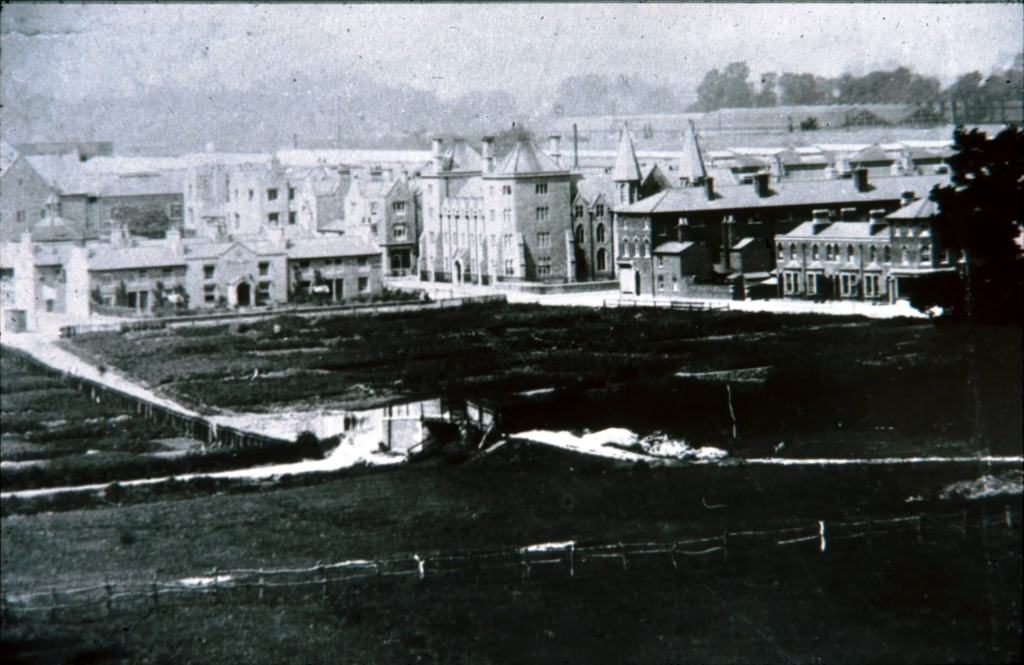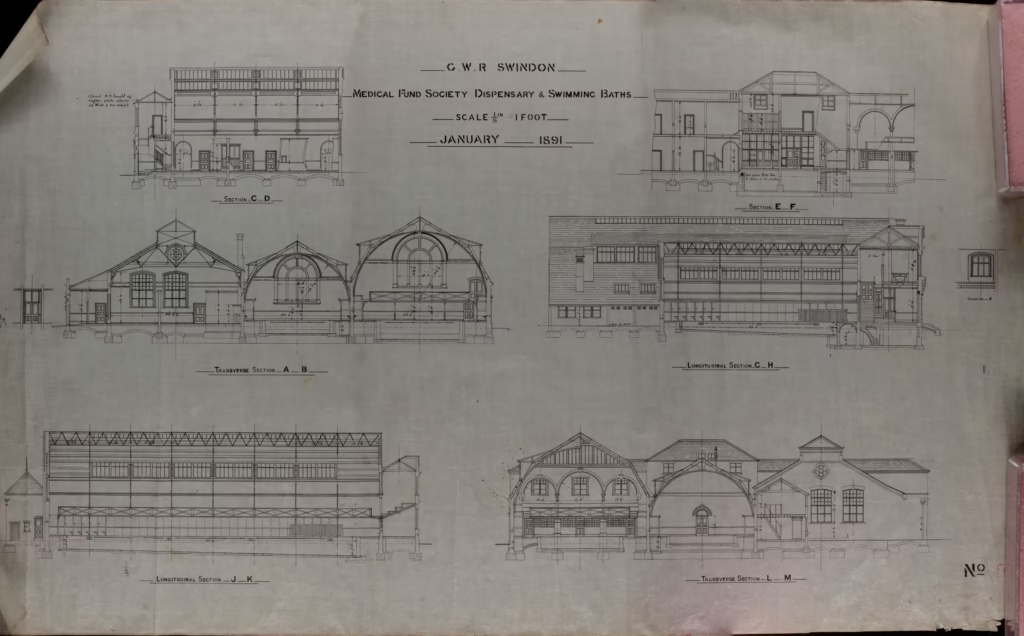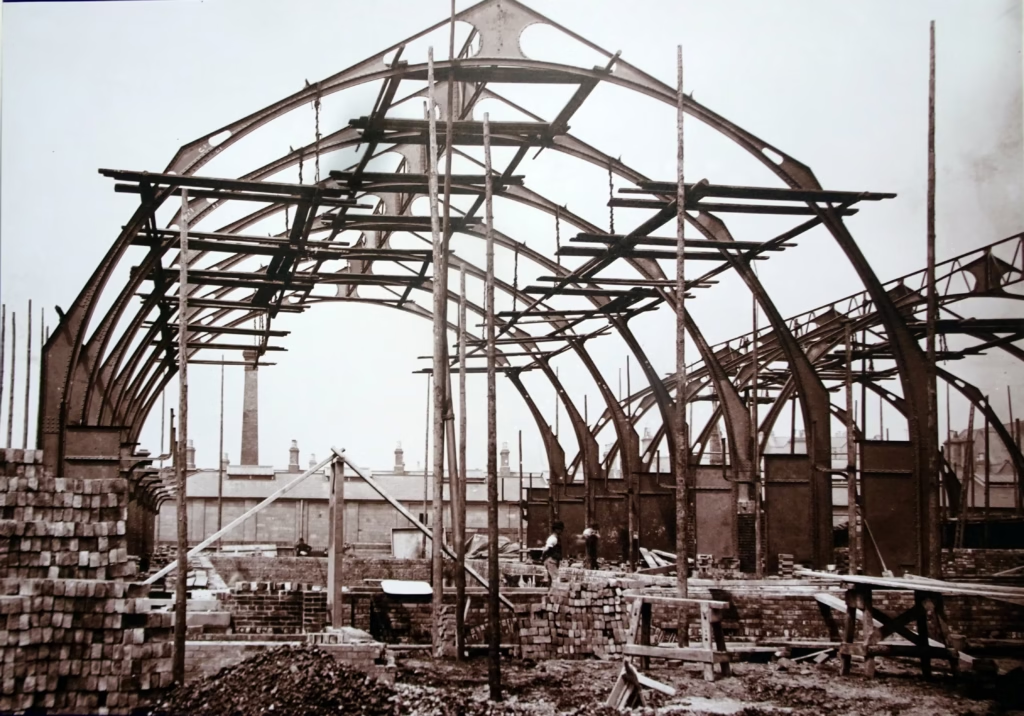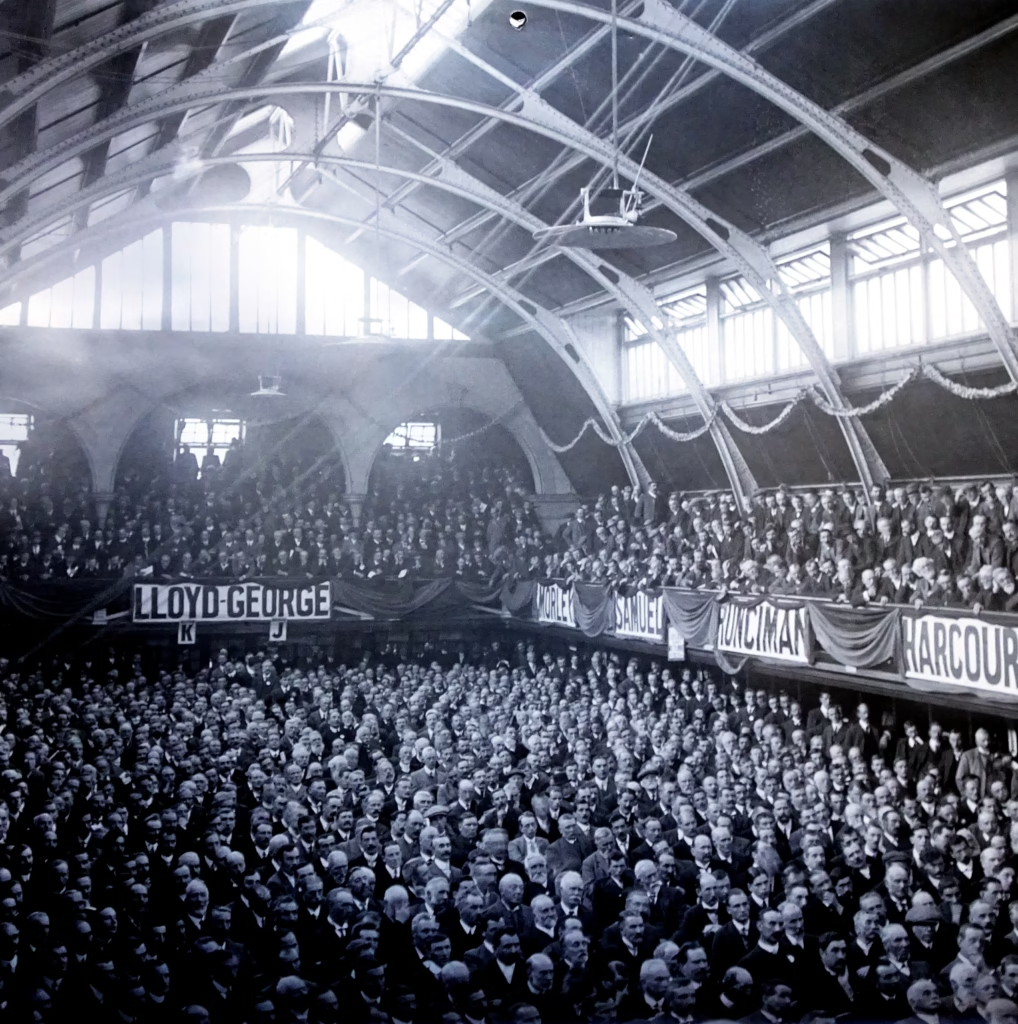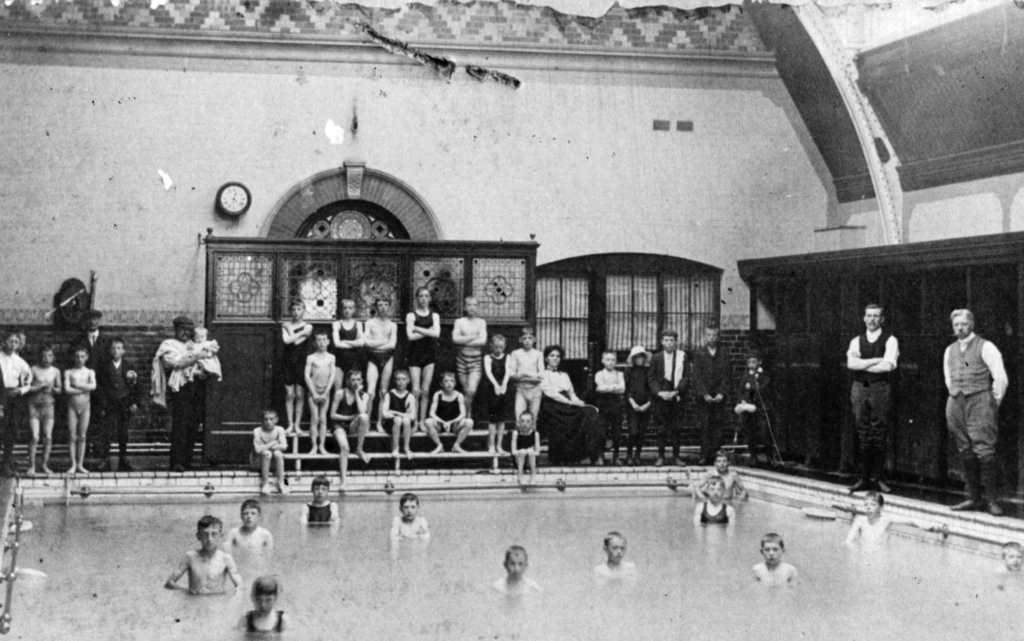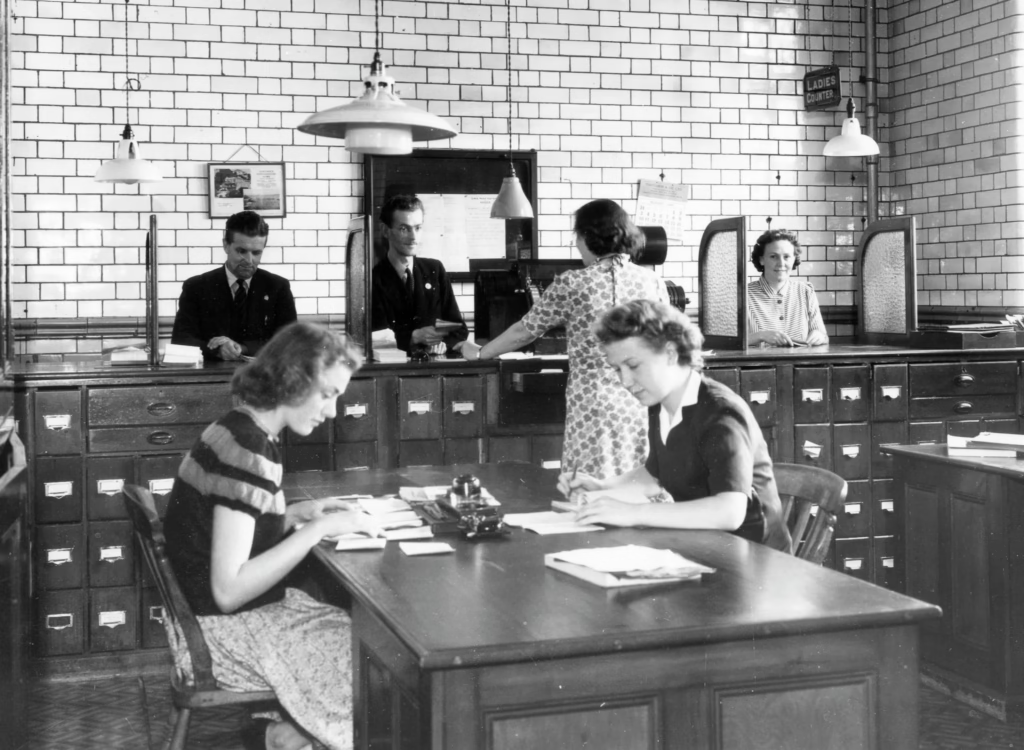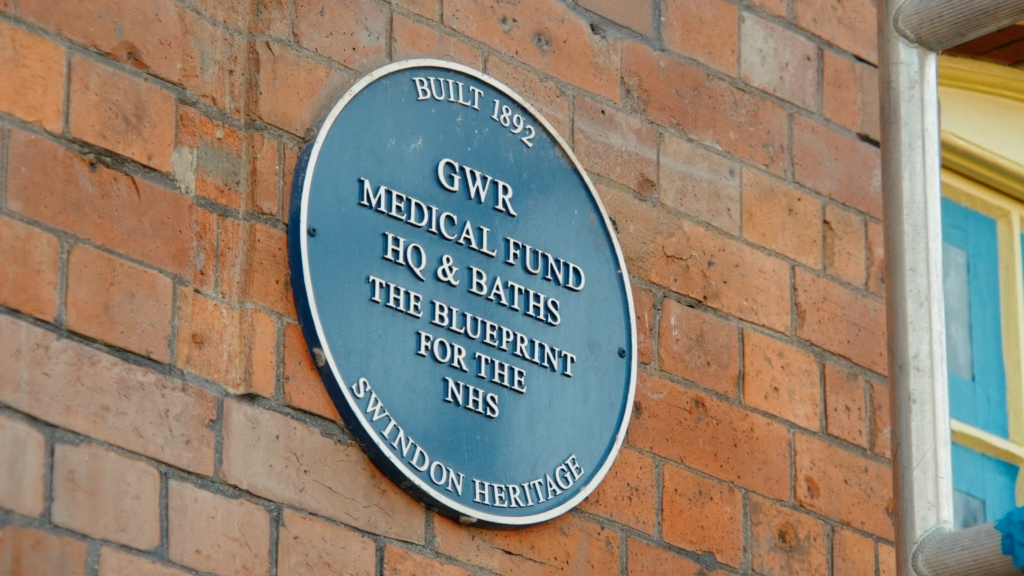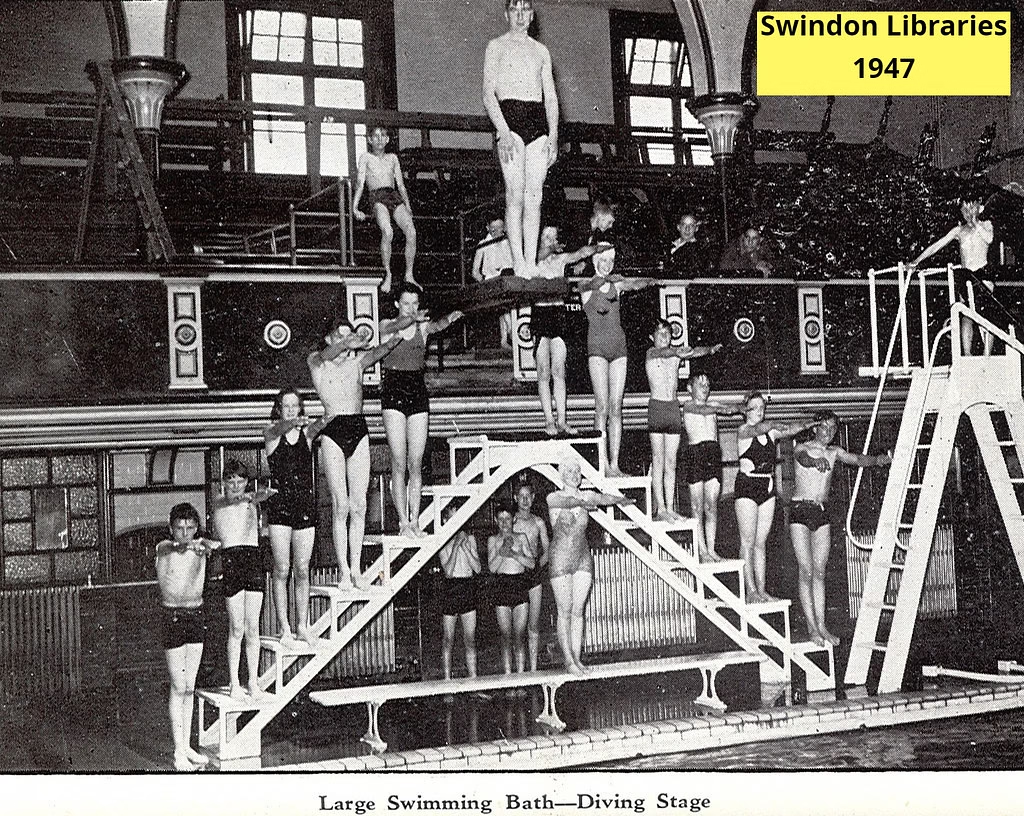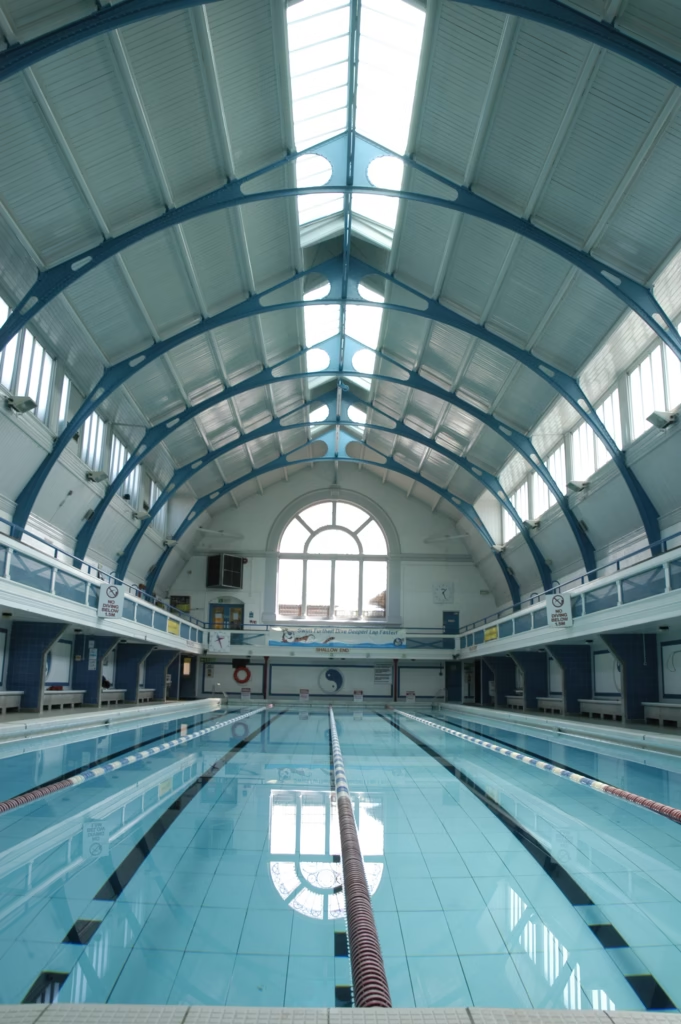Health Hydro
History & Heritage
GWR Medical Fund Society
Isambard Kingdom Brunel’s Great Western Railway was established in 1833 to connect Bristol and London, reaching Swindon in 1840. The opening of the Swindon Railway Works in 1843, transformed Swindon from a small hilltop market town into an industrial giant.
The GWR Medical Fund Society, initially called the Sick Club, was established in 1847 to provide “Medicine and Attendance” to the men employed in the Works, and their families. It was funded by subscriptions from each employee’s monthly wage – varying from 4d from married men to 1 and 1/2d from boys earning less than 10 shillings.
As the Works expanded and employed more men the Fund grew and, in 1870, a cottage hospital was established in the building which is now the Central Community Centre on Faringdon Road. It housed a five-bed ward, an operating room, room for post-mortems, a morgue, a dispensary and reception with formal gardens laid out to the front.
1891-1947 GWR Medical Fund Baths & Dispensary
At this time, sanitation and personal hygiene was poor. The growing population lived cheek by jowl. Disease was rife and epidemics would break out. The railway industry was extremely dangerous and accidents were common.
The Health Hydro was built opposite the cottage hospital in 1891-92, and was the Medical Fund Society’s most ambitious project – which aimed to “inspire a more thoughtful and holistic approach to the health and wellbeing of Swindon”. The railway workers paid for and built this extensive health complex in 1891, in return for free treatment for them and their families, whenever they needed it.
Initially known as Milton Road Baths & Dispensary, it was run run by a committee of GWR employees, elected by their colleagues. It was extended in phases, with its public washing baths later added in 1898-9, Turkish and Russian baths added in 1904-5, and further additions were made in 1911 to create the vast complex we now see today.
The buildings are in a Queen Anne style designed by JJ Smith of Swindon. It occupies a full block, with washing baths, two swimming pools, Turkish and Russian baths in the ‘wet side’ and, a dispensary and consulting rooms for doctors, dentists and ophthalmology, chiropody, psychology and physiotherapy departments in the ‘dry side’.
The swimming pools, with iron trusses in their roofs from the Works, look more like railway stations than pools. Nearly all of the materials from the trusses to the bricks, stained glass windows, joinery and metal door furniture were made in the Works.
The large pool, originally for men, is 33 1/3 metres long, five lanes wide, 1 to 2 metres deep. The small pool was for women and children. Although the Russian baths have been removed, the Turkish Baths are the oldest surviving Victorian-style Turkish baths to have been in continuous use anywhere in the world.
In 1905 there were 11 doctors, a dental surgeon, an assistant dentist and seven dispensers on the staff. There was a dispensary, washing baths, Turkish baths, a dentistry, invalid chairs, swimming baths, hairdressing and shaving salons.
Membership of the Medical Fund Society was compulsory for employees of the Great Western Railway Company in the town. The Medical Fund Society had 15,300 members in 1908, rising from 500 members 50 years earlier.
When the Works was still in operation, the swimming pool water was pumped 3⁄4 mile to the baths from the Works. A tunnel, high enough to walk through, brought utilities including steam heating from the Works under Faringdon Road to the Hydro.
In the winter months it was not practicable to keep the pools operating and the large pool was emptied and boarded over for dances, concerts, roller-skating, boxing competitions and a Royal Hunt Ball.
During the First World War, the GWR Works were taken over for the war effort, and the MFS buildings were used as a military hospital, with the swimming pools floored over to create large hospital ward spaces; this work was reversed after 1918.
Inevitably there were challenges, notably during September 1916, when the GWR Medical Fund Society was deeply in debt and on the verge of collapse with many members away fighting and unable to pay their dues.
Many committee members were pressing to sell the assets, pay off debts and close it down. Others were concerned that this would remove medical care from thousands of workers. Agreement could not be found until George Brunger, a GWR Shop Steward and Union Rep, stepped in with a proposal for a special committee to be elected which would have 2 months to research potential solutions and report back to the Membership.
The committee’s proposed solutions modernised the outdated management of the Society and reorganised the finances, putting them on a sustainable footing. George chaired the committee until 1948 when the GWR Medical Fund Society was taken over by the newly formed NHS.
A Blueprint for the NHS
The Health Hydro was among the very first to recognise good health is more than absence of disease, but also about how people can improve health through hygiene, physical activity, preventative care, diet, a sense of community and leisure time/relaxation.
Where medicine at that time was concerned with understanding “why do people get sick”, the Health Hydro set out to answer “how can we keep people healthy”. This model of socialised healthcare was so revolutionary at the time, that it was visited by Aneurin Bevan and William Beveridge, architects of the National Health Service.
The Health Hydro has been described as a blueprint for the NHS; an integrated healthcare facility created 60+ years before the first NHS health centres. This building, created by the railways, helped pioneer healthcare as we know it today.
1947-1986 NHS Health Centre & Milton Road Baths
The NHS Milton Road Health Centre took over the former GWR Medical Fund Society medical facilities which had been operating in the ‘dry side’ of the building.
There was a GP practice, a pharmacy, chiropodists and opticians. Many local people still remember the little brass checks issued to those waiting for doctors’ appointments downstairs.
In 1985, the Milton Road Health Centre closed and services moved to a new complex in Carfax Street (since demolished). Gordon Hill, secretary of the Wilts Pharmaceutical Committee described the Milton Road Centre as “the oldest health centre in the world – the very first ever seen”.
From 1986: The Health Hydro
At this point Swindon Borough Council became responsible for the whole building and carried out a refurbishment before relaunching the services as ‘The Health Hydro’.
The dry side consulting rooms were filled by a range of complementary medical offerings and other activities. Acupuncture, alexander techniques, aromatherapy, hypnotherapy, homeopathy, massage, first aid, stress management, weight loss therapy, reflexology, rebirthing therapy, yoga, number therapy plus a Well Woman Centre were all on offer.
There were exercise rooms associated with the Turkish baths, with sun beds and infra-red sauna. The large and small pools, and the Turkish baths, continued operating, offering swimming, canoeing, scuba diving, lifesaving and aqua-aerobics. Swimming lessons were available for adults and children.
The tunnel between the Baths and the rail works had been flooded for some time and in 1993 British Rail filled it in.
In 2014 Greenwich Leisure Ltd (trading as Better) took over the operation of all of Swindon’s leisure centres, including the Health Hydro. In the Health Hydro both pools and the Turkish Baths continued to operate, although the
small pool was closed in January 2016.
In November 2019, the Department for Digital, Culture, Media and Sport (DCMS), on the advice of Historic England, designated the Health Hydro a Grade II* listing.
Less than 6% of listed buildings are Grade II* designated and this means ‘it is a particularly important building of more than special interest.’ See the list entry on the Historic England website.
Video created by young people in Swindon, mentored by Create Studios to explore the story of the town’s iconic Health Hydro, created in 2021 as part of the Heritage Action Zone.

